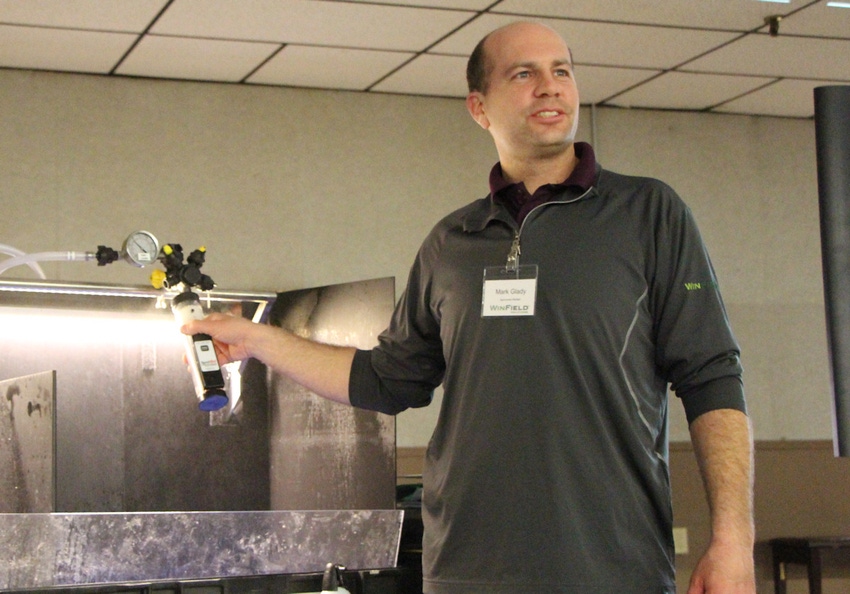April 21, 2016

Note: This is the fourth in a series on fine-tuning your spraying, this time with a look at ways to improve your approach to beat tough weeds. Don't miss other parts of the series:
3 biggest mistakes applicators make
Video Demo: Picking the right spray nozzle
In this next installment of our “Sprayer Tech” series, Winfield agronomist Mark Glady goes through the products that make spraying and sprayers more effective.
Mark Glady, agronomist with Winfield, conducts sprayer clinics on sprayer technology and how to be a better applicator. He says there are seven products that are essential to killing weeds. The first three are residual herbicides that you can use to help kill the tougher weeds such as waterhemp in soybeans. The others can improve the efficiency and effectiveness of applying the herbicides.
At-planting residual herbicide: Glady says this is the foundation for a weed management program in soybeans, especially for soybeans that are resistant to glyphosate. At-planting residual herbicides, such as PREsidual Sonic, Authority brands, Valor, and Fierce, must be applied before soybeans emerge. They should offer weed control for about a month. These herbicides require moisture or rainfall to work, but the return far outweighs the cost, Glady says. Ask your agronomist which products work best for your area.
Early post-emergent herbicide with a PPO inhibitor: These herbicides will pick up where your pre-emerge residual herbicide leaves off. Usually Applied in June, they will treat waterhemp, which can grow 3/4 inches per day. Some of the brand names include Flextar, Cobra, Avalanche Ultra, and Warrant Ultra.
Second residual herbicide as an early post-herbicide application. This application is not as common but it is gaining more traction, especially in fields that have a history of waterhemp, Glady says. He recommends applying a second residual in any fields you are expecting waterhemp pressure in beans. Examples of these herbicides include Warrant, Outlook, Dual, and Charger.
Deposition and drift reduction agents. Drift reducing products, such as Interlock by Winfield, reduces the number of fine droplets or “fines” in the chemical application to reduce spray drift and provide good coverage. “You never want to see a fog cloud behind your sprayer because it means droplets are drifting away or evaporating before reaching the weed surface, which will reduce their effectiveness,” Glady says.
Water conditioning agent or adjuvant: Products in this category improve the weed’s uptake of glyphosate. There are many you can buy, but the one Winfield sells is Class Act NG with CornSorb Technology. “Adjuvants help to buffer the glyphosate against hard water and Winfield’s Class Act NG help get the herbicide into the plant, which can be a smart investment alternative to just putting on more Roundup,” Glady says. When using a conditioning agent be sure to put it in the tank prior to adding the glyphosate herbicides to soften the water.
Sprayer calibrator. Digital sprayer calibrators, such as the SpotOn model by Innoquest, Inc., provides quick and accurate flow rate checking of individual sprayer nozzles.
Compressed air. Other companies make this product, too, but the compressed gas duster by Office Max can be used to clean out a plugged nozzle without damaging or scratching the orifice.
About the Author(s)
You May Also Like




